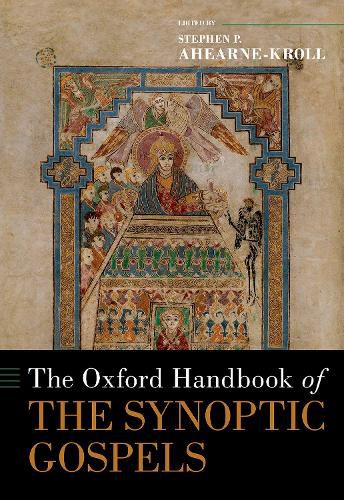Readings Newsletter
Become a Readings Member to make your shopping experience even easier.
Sign in or sign up for free!
You’re not far away from qualifying for FREE standard shipping within Australia
You’ve qualified for FREE standard shipping within Australia
The cart is loading…






The Oxford Handbook of the Synoptic Gospels presents essays that push the field beyond the Synoptic Problem and theological themes that ignore the particularities of each Gospel. The first section, The Problem and Nature of the Synoptics, explores some of the traditional approaches of literary dependence, but primarily engages with alternative ways to understand Synoptic relations and the nature of each Gospel. Interesting questions are raised in these essays regarding the tools used to evaluate literary dependence beyond those of traditional source criticism and redaction criticism (such as performance, orality, rhetoric, ancient publication, literary structures, manuscript variety, and use by non-canonical literature). The second section, Particular Features in Comparison, treats a variety of historical, literary, and cultural phenomena important to the study of these Gospels (such as gender, violence, power, body, history, sacred space, healing, food, gospel, suffering, sectarianism, itineracy, women, wealth). These essays indirectly reshape traditional theological themes like salvation, Christology, and discipleship, grounding them in the cultural dynamics of the period. The two main sections simultaneously express the current state of the field and push the field forward in unexplored directions.
$9.00 standard shipping within Australia
FREE standard shipping within Australia for orders over $100.00
Express & International shipping calculated at checkout
The Oxford Handbook of the Synoptic Gospels presents essays that push the field beyond the Synoptic Problem and theological themes that ignore the particularities of each Gospel. The first section, The Problem and Nature of the Synoptics, explores some of the traditional approaches of literary dependence, but primarily engages with alternative ways to understand Synoptic relations and the nature of each Gospel. Interesting questions are raised in these essays regarding the tools used to evaluate literary dependence beyond those of traditional source criticism and redaction criticism (such as performance, orality, rhetoric, ancient publication, literary structures, manuscript variety, and use by non-canonical literature). The second section, Particular Features in Comparison, treats a variety of historical, literary, and cultural phenomena important to the study of these Gospels (such as gender, violence, power, body, history, sacred space, healing, food, gospel, suffering, sectarianism, itineracy, women, wealth). These essays indirectly reshape traditional theological themes like salvation, Christology, and discipleship, grounding them in the cultural dynamics of the period. The two main sections simultaneously express the current state of the field and push the field forward in unexplored directions.